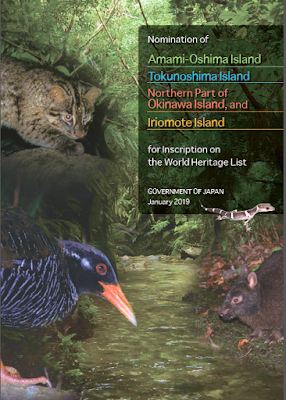Yambaru Forest's Second Attempt for World Natural Heritage Status: Improvements and Challenges

2019 Nomination Document On February 1, 2019, the Japanese Ministry of the Environment submitted to UNESCO and the International Union for Conservation of Nature (IUCN) its nomination of four areas in the Ryukyu archipelago for UNESCO World Natural Heritage status. The areas are Amami-Oshima Island, Tokuno-Shima Island, the Northern Part of Okinawa Island, and Iriomote Island (see the Nomination Document and the Nomination Annexes ). The nomination is the Ministry's second attempt in the last two years. In February 2017, the Ministry submitted its first nomination. However, in May 2018, IUCN, the advisory body to UNESCO concerning matters related to World Natural Heritage, recommended that the nomination should be "deferred" requesting a substantial revision. In response, the Ministry withdrew the nomination. In the present nomination dossier, we see improvements from the previous nomination, especially regarding the issues of the U.S. military’s North
